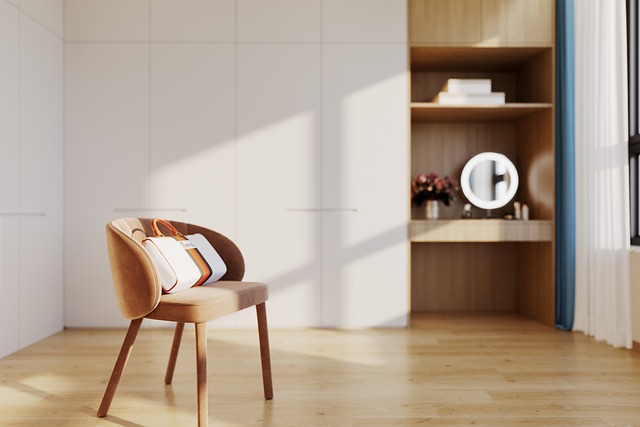Folding Furniture Ideas for Modern Minimalist Interiors
Modern folding furniture ideas highlight creative ways to maximize space while maintaining style and function. From compact tables to versatile chairs, these designs offer practical solutions for small areas and flexible living, making everyday arrangements more convenient.

Modern living demands smart solutions that adapt to our evolving lifestyles. Folding furniture represents the perfect intersection of functionality and style, offering homeowners the flexibility to reconfigure their spaces instantly while maintaining the clean lines and uncluttered appearance that define minimalist design principles.
What Makes Folding Furniture Ideal for Minimalist Spaces?
Minimalist interiors prioritize simplicity, functionality, and visual breathing room. Folding furniture aligns perfectly with these principles by serving multiple purposes while occupying minimal visual and physical space when not in use. These pieces eliminate the need for permanent, bulky furniture arrangements, allowing rooms to feel more open and adaptable to different activities throughout the day.
The key advantage lies in their ability to disappear when not needed. A folding desk can transform a bedroom into a workspace during the day, then fold away to restore the room’s peaceful sleeping environment. This dual functionality prevents spaces from feeling cluttered or overwhelmed by furniture pieces that serve only single purposes.
Modern Folding Tables and Chairs for Contemporary Homes
Contemporary folding tables have evolved far beyond basic card tables. Today’s designs feature sleek metal frames, natural wood surfaces, and innovative mechanisms that create stable, attractive pieces suitable for dining, working, or entertaining. Wall-mounted drop-leaf tables provide instant surface area for meals or projects, then fold flush against the wall to preserve floor space.
Modern folding chairs complement these tables with equally sophisticated designs. Options range from transparent acrylic chairs that virtually disappear when folded to wooden designs with clean geometric lines. Many contemporary folding chairs stack efficiently, allowing you to store multiple seating options in the space typically required for one traditional chair.
The integration of technology has also enhanced modern folding furniture. Some pieces incorporate wireless charging surfaces, built-in lighting, or adjustable height mechanisms that adapt to different users and activities.
Space-Saving Solutions for Small Living Areas
Small apartments and homes benefit tremendously from strategic folding furniture placement. Murphy beds represent the ultimate space-saving solution, transforming bedrooms into living areas during the day. Modern versions include integrated shelving, desks, or seating areas that remain functional even when the bed is folded up.
Folding room dividers serve dual purposes in open-plan living spaces. These pieces create privacy and define different areas while folding completely flat for storage when maximum open space is desired. Some designs incorporate mirrors, artwork, or additional storage to enhance their functionality beyond simple room division.
Console tables that expand into full dining tables accommodate both daily use and entertaining needs. These pieces typically feature extension mechanisms that double or triple their surface area, then fold back to narrow profiles suitable for hallways or behind sofas.
| Product Type | Provider | Key Features | Cost Estimation |
|---|---|---|---|
| Wall-Mounted Folding Desk | IKEA | Space-saving, multiple finishes | $80-150 |
| Expandable Console Table | West Elm | Solid wood, seats 6-8 when extended | $400-800 |
| Folding Dining Chairs | CB2 | Stackable, modern design | $60-120 per chair |
| Murphy Bed System | Resource Furniture | Custom sizing, integrated storage | $2,000-5,000 |
| Folding Room Divider | Wayfair | Various materials, portable | $100-400 |
Prices, rates, or cost estimates mentioned in this article are based on the latest available information but may change over time. Independent research is advised before making financial decisions.
Design Considerations for Folding Furniture Integration
Successful integration of folding furniture requires careful attention to materials, colors, and proportions. Choose pieces that complement your existing color palette and maintain consistent material themes throughout the space. Metal and wood combinations work particularly well in minimalist settings, providing warmth while maintaining clean, industrial aesthetics.
Consider the folding mechanisms themselves as design elements. High-quality hardware with smooth operation becomes part of the furniture’s visual appeal, while poorly designed mechanisms can detract from the overall aesthetic. Look for pieces where the folding elements are integrated seamlessly into the design rather than appearing as obvious afterthoughts.
Scale remains crucial when selecting folding furniture. Pieces should feel proportionate to the room size both when deployed and when folded. A massive folding table might provide excellent surface area when extended but could overwhelm a small room even when folded if not properly proportioned.
Maintenance and Longevity of Folding Furniture
Quality folding furniture requires minimal maintenance but benefits from regular attention to moving parts. Keep folding mechanisms clean and lubricated according to manufacturer recommendations to ensure smooth operation over time. Check hardware periodically for loose screws or worn components that might affect stability or safety.
Invest in pieces with solid construction and quality materials. While folding furniture might seem inherently less durable than fixed pieces, well-made examples can last decades with proper care. Look for reinforced joints, quality hinges, and stable locking mechanisms that maintain their integrity through repeated use.
Folding furniture offers modern homeowners unprecedented flexibility in space utilization while supporting minimalist design principles. These innovative pieces prove that functionality and style can coexist beautifully, creating homes that adapt seamlessly to changing needs while maintaining clean, uncluttered aesthetics that define contemporary living.




